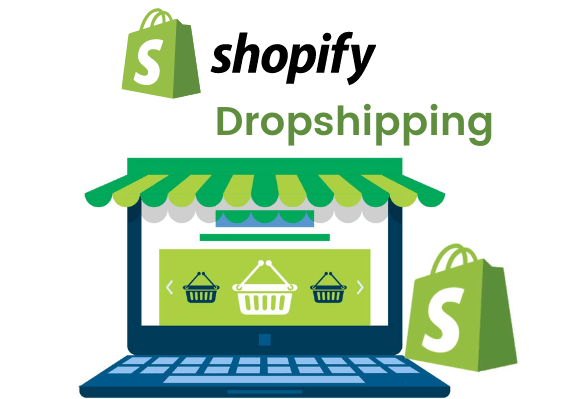A popular explanation of Shopify Dropshipping
Shopify dropshipping is a low-threshold, highly flexible e-commerce business model.
Its core is that sellers do not need to stock up. When customers place an order, the products are shipped directly to customers by suppliers. This means that you can focus on product marketing and customer experience, eliminating the complex operations of inventory management and logistics.
Why choose Shopify?
Because it is one of the most popular dropshipping platforms, with complete e-commerce functions and a powerful ecosystem.
Shopify provides rich theme templates, simple website building process, stable payment system, and seamless integration with dropshipping tools such as Oberlo and DSers to help sellers quickly build, optimize and expand online stores.
In addition, Shopify has good SEO performance and global payment support to help you expand into the international market.This model is especially suitable for individual entrepreneurs, students, freelancers, and small and medium-sized business owners.
Whether you want to increase your income through a side job or seek full-time entrepreneurial opportunities, Shopify dropshipping provides you with a flexible and scalable solution.
This article will show you the basic principles of Shopify dropshipping, the advantages of the platform, the practical process, and how to efficiently start your first dropshipping store. Even if you are new to e-commerce or are preparing to expand your online business, the following content will provide you with practical guidance.
How Does Dropshipping Work?
Setting Up Your Shopify Store for Dropshipping
It is not complicated to build a Shopify store for dropshipping. You can start efficiently by mastering the following core steps:
Register a Shopify account
Visit the Shopify official website, register an account, fill in your email, password and store name. You can enjoy a 3-day free trial, during which you can get familiar with the backend functions and test various settings.
Choose a suitable Shopify package
It is recommended that beginners choose the Basic Shopify package, which has a low monthly fee and includes independent online stores, payment processing, order management, basic reports and other functions, which can fully meet the initial operation needs of dropshipping. After the store scale expands, you can upgrade the package to get more advanced functions and lower handling fees.
Recommended basic plug-ins
To achieve efficient and automated operations, the following plug-ins are worth installing:
DSers: Officially recommended, supports AliExpress bulk import of goods, one-click ordering, inventory synchronization, and is most suitable for standard dropshipping mode.
Spocket: Local suppliers in Europe and the United States, faster delivery, support for branded packaging, and enhance customer experience.
Modalyst: Rich in mid-to-high-end brand products, suitable for creating differentiated, high-quality stores.
CJdropshipping: Direct supply from Chinese factories, supports customized packaging and video shooting, suitable for sellers with brand needs.
Basic store settings
Domain name: It is recommended to purchase an independent domain name to enhance brand professionalism. You can purchase it through Shopify, or bind an existing domain name.
Brand Logo: A simple logo that matches the brand positioning can be quickly generated and uploaded using tools such as Canva and Looka.
Payment settings: Enable mainstream payment methods such as Shopify Payments (credit card payment) and PayPal to cover a wide range of user needs and ensure smooth payment.
Finding and Choosing the Right Dropshipping Suppliers
Choosing the best dropshipping suppliers directly affects your store's reputation and profits.
Common suppliers include domestic platforms such as AliExpress, and international platforms such as Spocket, Zendrop, Modalyst and Wholesale Central.
When screening suppliers, focus on product quality, delivery speed and after-sales policy. High scores and high sales can initially screen out high-quality suppliers, but it is best to test samples to confirm the quality.
Delivery speed directly affects customer experience. It is recommended to give priority to local warehouse delivery in the European and American markets. In terms of after-sales, it is necessary to clarify the return and exchange policy and processing procedures to avoid subsequent disputes.
It is equally important to establish a good relationship with suppliers. Maintain active communication, place orders steadily, provide timely feedback when encountering problems, and deal with them rationally. Suppliers will usually provide better support. Only by choosing the right suppliers and having a stable cooperation can we lay the foundation for the long-term profitability of the store.


